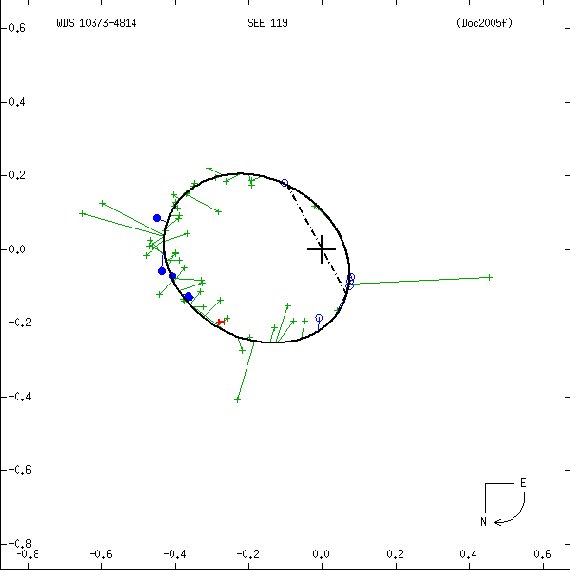
 |
p Velorum B orbits p Vel B (at the cross) over a period of sixteen and a half years at a mean separation of 9.9 Astronomical Units. In reality the two go about a common center of mass that lies between them. The scale is in tenths of a second of arc, the closeness of the pair making them difficult to separate. The true semimajor axis does not mark that of the apparent ellipse because of the orbital tilt to the plane of the sky and its orientation. (W. I. Hartkopf and B. D. Mason, Sixth Catalog of Orbits of Visual Binary Stars, US Naval Observatory Double Star Catalog, 2006.) |